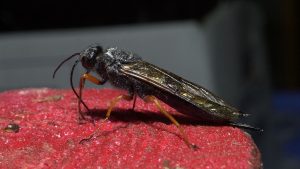#144: Stereum ostrea, the False Turkey Tail
This mushroom is a common sight on hardwood logs at any time of the year. Its fan shape and circular zones of orange and brown colors make Stereum ostrea look very similar to the true Turkey Tail, Trametes versicolor. ostrea, the “False Turkey Tail,” has a smooth undersurface, which easily distinguishes it from T. versicolor.







![#011: Characteristics of Kingdom Fungi [Archived]](https://www.fungusfactfriday.com/wp-content/themes/hueman/assets/front/img/thumb-small-empty.png)

